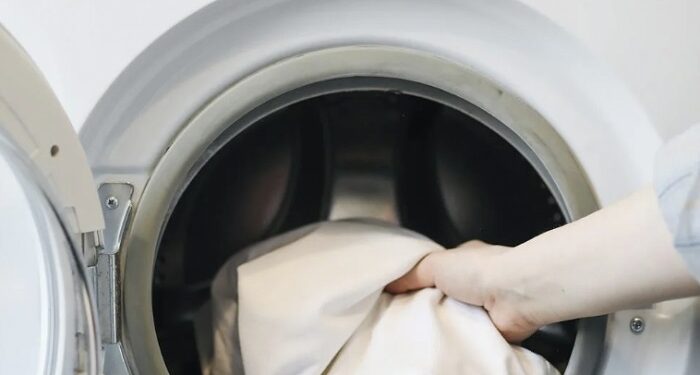When you do laundry, you’re probably choosing the temperature out of habit. Maybe you were told hot water gets things cleaner. Maybe you just default to cold because it’s “gentler.” Either way, if your clothes are shrinking, fading, or still smelling funky after a wash, your temperature setting might be the real issue. So—cold wash or hot wash? Here’s the straight answer.
What Hot Water Does
Hot water (typically 60°C/140°F and above) is aggressive. It:
- Kills most bacteria and dust mites
- Dissolves heavy soil and grease better
- Fades dark fabrics faster
- Shrinks cotton, wool, and delicate blends
- Breaks down elastics and synthetics
It’s ideal for things like:
- Towels
- Bed sheets
- Gym clothes after a heavy workout
- Cloth diapers
- Items exposed to illness or infection
But for everyday clothes? It’s overkill. You’re damaging fabrics for minimal gain.
What Cold Water Does
Cold water (20–30°C or lower) is far gentler. It:
- Preserves fabric color
- Reduces shrinking and stretching
- Saves energy (no heating required)
- Works well with modern detergents
- Is ideal for lightly soiled clothes and delicates
Use cold for:
- Dark jeans and black t-shirts
- Delicates and lingerie
- Activewear with stretch
- Anything labeled “cold wash only”
- Synthetic materials like polyester or rayon
Modern detergents are designed to perform in cold water. You don’t need heat to clean, unless you’re dealing with real grime or bacteria.
The Shrinking Myth
People often blame the dryer for shrinking clothes, but hot water in the wash is just as guilty. Natural fibers like cotton and wool contract in high temperatures. So if your favorite hoodie or sweater is suddenly toddler-sized, it wasn’t just the spin cycle—it was your hot wash setting.
Cold Wash Saves Clothes and Energy
Want to cut your energy bill? Up to 90% of the energy used in a wash cycle goes to heating water. Cold washing slashes electricity use and saves your clothes in the process. It’s the easiest eco-friendly switch you can make.
When You Should Use Hot Water
There are a few situations where hot water makes sense:
- Washing towels and sheets weekly
- Killing dust mites or allergens
- Sanitizing items after illness
- Removing heavy grease or motor oil
- Cleaning cloth face masks
But these are exceptions, not the rule. For most day-to-day laundry, hot water does more damage than good.
The Best Strategy: Smart Sorting
Don’t use the same temperature for everything. Sort your laundry into three categories:
- Cold wash: Everyday clothes, delicates, dark colors
- Warm wash: Lights, moderately dirty items
- Hot wash: Linens, towels, infection-risk loads
Match the temperature to the fabric and how dirty it actually is—not just for convenience.
How Temperature Affects Detergent
Some detergents need heat to activate. If you’re using cheap powder in cold water, it might not dissolve properly—leaving residue or even streaks on clothes. Always check the label. Use cold-specific or liquid detergents for cold washes.
Want better results with cold washes? Add a laundry booster like baking soda or vinegar to enhance the clean without needing higher temps.
Delicates and Cold Water: Non-Negotiable
Lingerie, wool, silk, and synthetics should never see hot water. Cold water preserves elasticity, color, and fabric integrity. If your bras or delicate shirts are wearing out too quickly, switching to cold washes will fix that.
Hot Water Wrecks Activewear
That high-tech gym gear? It’s built with stretch, mesh, and performance fabrics. Hot water wrecks them. It breaks down the structure, melts synthetics, and locks in odors. Always wash activewear cold, inside out, and without softener.
Still Getting Bad Results? It’s Not the Temperature
If your clothes still come out smelly or stained even after following temp rules, the problem might be buildup in your machine, detergent issues, or overloading. You may also be dealing with poor-quality materials that trap odors no matter what.
When in doubt, stop guessing and hand it off to the best laundry in London. Professional machines, temperature control, and proper sorting guarantee your clothes come back clean, fresh, and undamaged.
Summary: Don’t Let the Washer Decide
Don’t rely on the default settings. Take control:
- Use cold for colors, synthetics, and anything you want to last
- Use hot sparingly—only when sanitation is absolutely necessary
- Use warm as a middle ground when needed
- Always follow the label—and your fabric type
Final Word: Cold Is Your Friend
Unless you’re washing a hospital sheet or cleaning up after the flu, cold water is your best option. It saves money, reduces damage, and still gets the job done. Most people could switch 80% of their loads to cold with zero downside—and a lot of upside.









